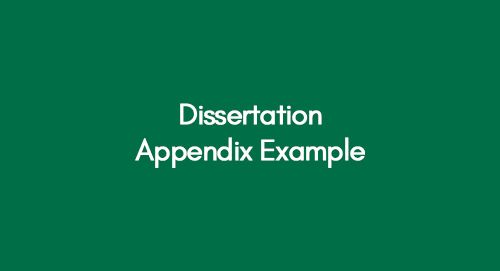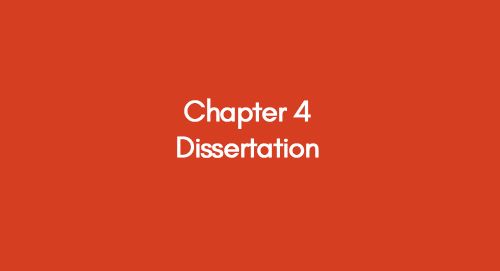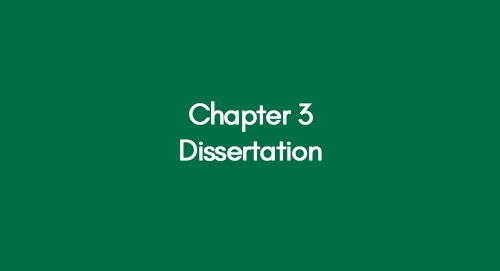
What is Dissertation Appendix? | Tips & Example
February 20, 2023
How to Write Chapter 4 Dissertation?| A Complete Guide
February 22, 2023A dissertation is a long-form academic paper that presents original research on a specific topic. It typically follows a standard structure consisting of several chapters, each with a specific purpose and content.
Chapter 3 of a dissertation is typically referred to as the "Methodology" chapter. This chapter outlines the methods and procedures used to conduct the research, and it serves to convince readers that the chosen methods are appropriate for the research question and that the data gathered is reliable.
Example: 1 Review Quality Methodology Dissertation Examples
Keep going through till the end to have a complete idea of how to compose a well-written and structured chapter 3 dissertation.
Key Elements to Include in a Methodology Chapter
Here are some key elements to include in a chapter 3 dissertation:
- Research design: Describe the overall approach to the study, including whether it is qualitative, quantitative, or mixed methods, and the rationale behind the chosen approach.
- Participants and sampling strategy: Provide details on the target population, the sample size, and the sampling strategy used.
- Data collection methods: Explain the methods used to gather data, including any surveys, interviews, experiments, or observations, and describe the procedures used to ensure the data's validity and reliability.
- Data analysis methods: Describe the methods used to analyze the data, including any statistical tests, coding procedures, or other techniques.
- Ethical considerations: Address any ethical concerns related to the study, including issues such as informed consent, confidentiality, and privacy
What to Include in Chapter 3 Dissertation
The main purpose of Chapter 3 in dissertation is to provide a detailed overview of the project that was conducted during your research. Include information about how you collected your data and what methods were used to analyze it. It’s important to include all relevant details so that readers can understand exactly how you went about collecting and analyzing the data. Some things that should be included in Chapter 3 are:
- An explanation of the research design or methodology used.
- Details about any instruments or materials used.
- The procedure followed during data collection.
- A description of any statistical analyses performed.
- Any limitations experienced while conducting the study.
Main Data Collection Methods for Chapter 3
Quantitative and qualitative data collection methods are two distinct approaches to gathering data that are used in social science research. They differ in their methodologies, as well as their focus and the types of data collected.
1. Quantitative Research Methodology
Quantitative data collection methods involve collecting numerical data that can be analyzed using statistical methods. The goal of quantitative research is to gather data that can be used to make inferences about a population or phenomenon. Common quantitative data collection methods include:
- Surveys and Questionnaires: Surveys and questionnaires are used to collect data from large samples of participants. Participants are asked a set of standardized questions, and the data is usually analyzed using statistical software.
- Experiments: Experiments are used to study cause-and-effect relationships between variables. Researchers manipulate one variable and observe the effects on another variable. Data is usually collected using standardized instruments or measures.
- Observational Studies: Observational studies involve observing participants in their natural environments. Data is usually collected using standardized protocols, such as checklists or rating scales.
2. Qualitative Research Methodology
Qualitative data collection methods, on the other hand, focus on collecting non-numerical data that can provide insight into the experiences, attitudes, and behaviours of individuals or groups. Qualitative research seeks to understand complex phenomena by exploring the subjective experiences of individuals. Common qualitative data collection methods include:
- Interviews: Interviews involve in-depth conversations with participants. Researchers ask open-ended questions to gather detailed information about the participant's experiences and perspectives.
- Focus Groups: Focus groups involve bringing together a small group of participants to discuss a specific topic. Researchers facilitate the discussion and gather data through observation and note-taking.
- Observational Studies: Observational studies are also used in qualitative research. However, in qualitative research, the focus is on understanding the experiences and perspectives of the participants rather than on measuring behaviour.
Writing Tips for Chapter 3 in Dissertation
Now that we’ve outlined what should be included in Chapter 3 let’s look at some tips for writing it effectively.
- Use appropriate headings: Use headings to break down the chapter into sections that are easy to follow. This will help your readers navigate through the chapter and understand the organization of the content.
- Use visuals: Consider including diagrams, tables, or charts to help explain your methodology. These visuals can help to illustrate your methods and procedures and can make the chapter more engaging for the reader.
- Provide rationale: Explain the reasoning behind your choices for the research design, sampling strategy, data collection and analysis methods. This helps to demonstrate that your methods are appropriate and reliable.
- Discuss potential limitations: Consider any limitations to your methodology, such as sample size, access to participants, or potential sources of bias. Addressing these limitations and discussing how you mitigated them shows your readers that you have critically considered the potential limitations of your study.
- Revise and edit: After completing the first draft of your chapter, revise and edit it thoroughly. Check for grammar and punctuation errors, as well as ensure that the content flows logically and coherently.
By following these tips and ensuring that your Methodology chapter includes all the necessary elements, you can write a dissertation chapter 3 that is well-organized, clear, and convincing.
Break Down of Dissertation Chapters
The exact format of a dissertation can vary depending on the academic field and institution, but here is a general overview of the typical dissertation chapters:
- Introduction: The introduction provides an overview of the research question, the context of the study, and its significance. It should also outline the scope and limitations of the study, as well as provide a summary of the key findings.
- Literature Review: The literature review chapter is where the researcher summarizes and synthesizes the existing literature on the topic. It should identify and discuss relevant studies, theories, and concepts that inform the research question and explain how the study contributes to the existing knowledge in the field.
- Methodology: The methodology chapter describes the methods and procedures used to collect and analyze data. This chapter should detail the research design, sampling strategy, data collection methods, and data analysis techniques. It should also address any limitations and ethical considerations.
- Results: The results chapter presents the findings of the study. This can include statistical analyses, tables, and figures that summarize the data. The results should be presented objectively and concisely and should directly relate to the research question.
- Discussion: The discussion chapter is where the researcher interprets and contextualizes the results in relation to the research question and the existing literature. It should explain the significance of the findings, discuss their implications, and identify any limitations and future directions for research.
- Conclusion: The conclusion chapter summarizes the study's key findings, and restates its significance. It should also address the research question and any hypotheses posed in the introduction and offer recommendations for future research.
- References: The reference list should include all the sources cited in the dissertation, following the appropriate citation style.
Additional chapters or sections may be included, depending on the specific requirements of the dissertation and the research question. These might include an abstract, acknowledgements, appendices, and other supplementary materials.
Conclusion
In conclusion, writing Chapter 3 can seem intimidating at first but by following our guide and keeping these key tips in mind—outline what should be included, consider who's reading it, keep each point clear and concise, and include a discussion section—you can ensure that your dissertation's Chapter 3 meets all expectations. With these strategies at hand, you can confidently approach this critical chapter feeling prepared and organized!
Get 3+ Free Dissertation Topics within 24 hours?



























